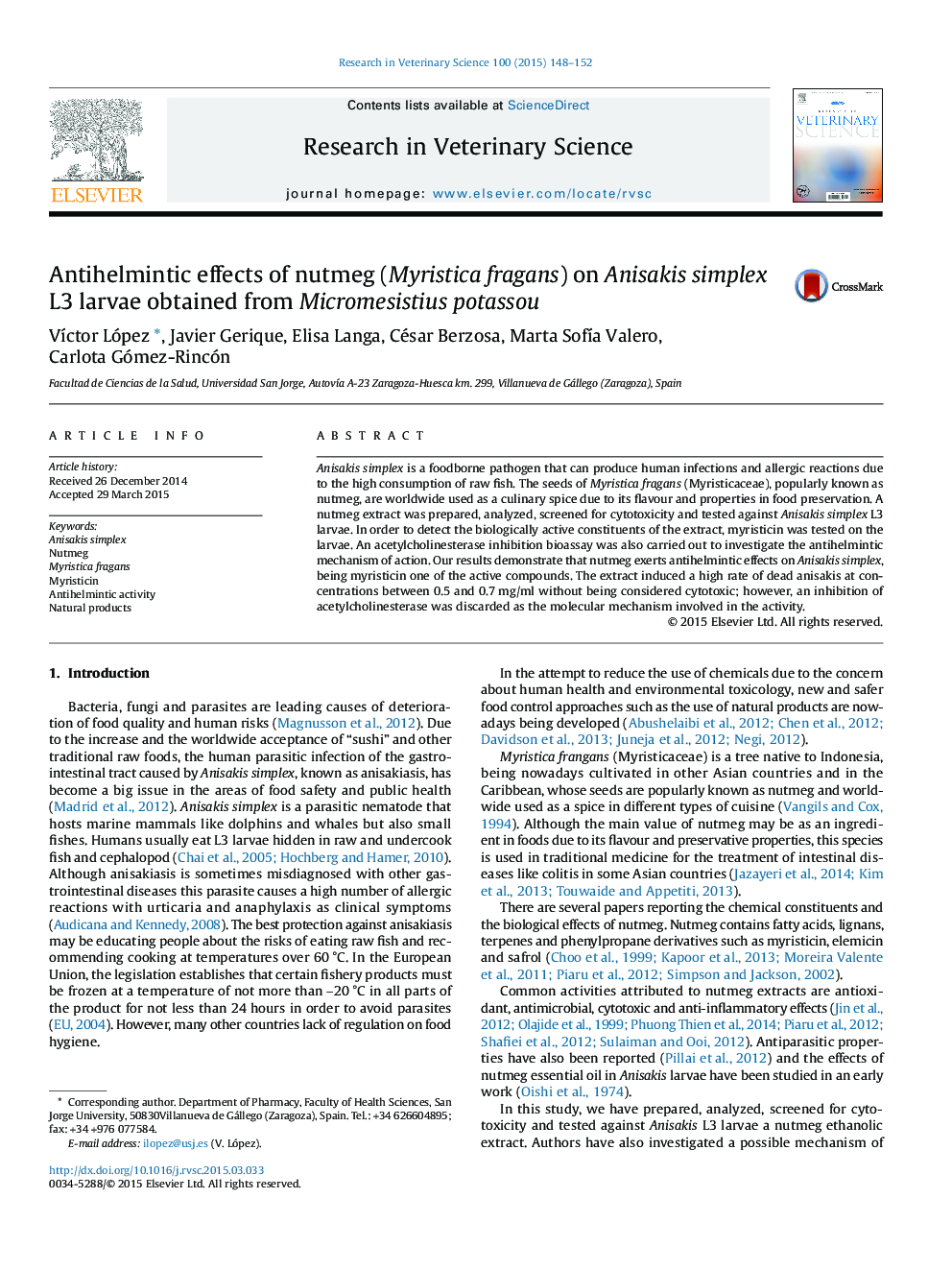| Article ID | Journal | Published Year | Pages | File Type |
|---|---|---|---|---|
| 5794672 | Research in Veterinary Science | 2015 | 5 Pages |
â¢Nutmeg (Myristica fragans) showed antihelmintic effects against Anisakis simplex.â¢Myristicin is reported as one of the active compounds with larvicidal activity.â¢Nutmeg extracts may be a tool to inactivate Anisakis larvae in fishery products.
Anisakis simplex is a foodborne pathogen that can produce human infections and allergic reactions due to the high consumption of raw fish. The seeds of Myristica fragans (Myristicaceae), popularly known as nutmeg, are worldwide used as a culinary spice due to its flavour and properties in food preservation. A nutmeg extract was prepared, analyzed, screened for cytotoxicity and tested against Anisakis simplex L3 larvae. In order to detect the biologically active constituents of the extract, myristicin was tested on the larvae. An acetylcholinesterase inhibition bioassay was also carried out to investigate the antihelmintic mechanism of action. Our results demonstrate that nutmeg exerts antihelmintic effects on Anisakis simplex, being myristicin one of the active compounds. The extract induced a high rate of dead anisakis at concentrations between 0.5 and 0.7âmg/ml without being considered cytotoxic; however, an inhibition of acetylcholinesterase was discarded as the molecular mechanism involved in the activity.
Graphical AbstractDownload full-size image
